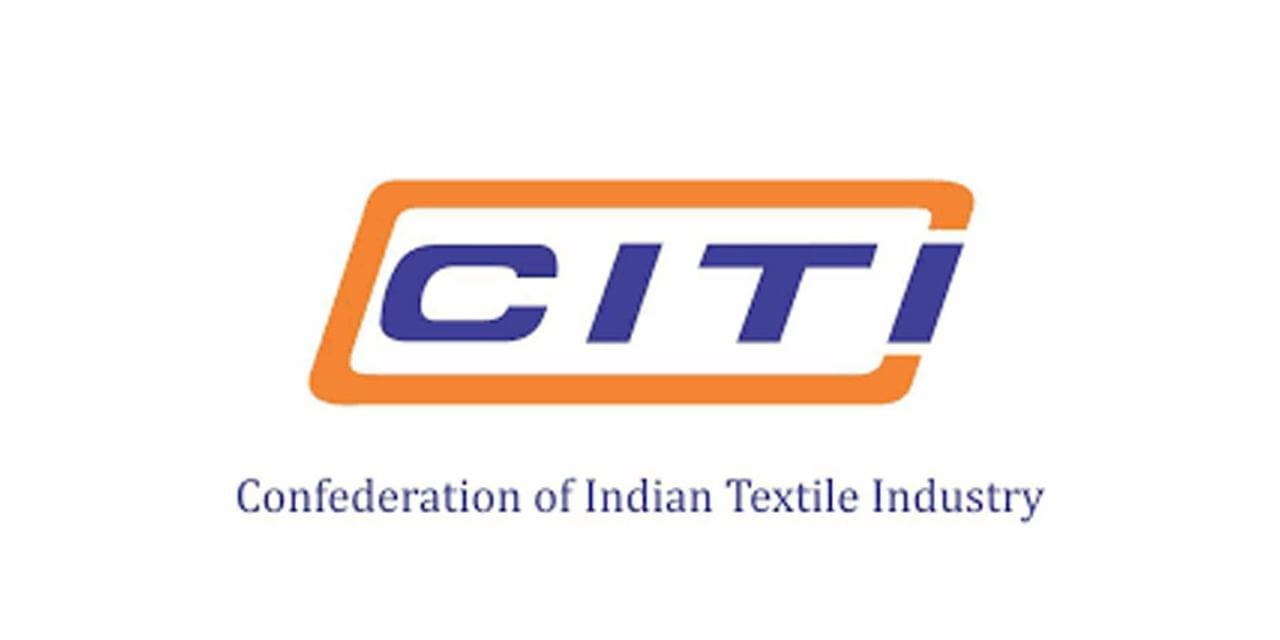
Mr. T.Rajkumar,
Chairman
The Confederaion of Indian Textile Industry (CITI)
Mr. T. Rajkumar, Chairman of the Confederation of Indian Textile Industry (CITI), is a Business Post Graduate from PSG College of Technology and is also the Chairman of Textile Sector Skill Council (TSC). He is a Director in National Skill Development Corporation (NSDC). He is a Director in the 90 years old diversified Sakthi Group of Companies. He is the Former Chairman of The Southern India Mills’ Association(SIMA) and The SIMA Cotton Development Research Association(SIMA CDRA), besides holding eminent positions in many other organisations.
CITI being apex body of Associations, what is the current demand from industry and how CITI is fulfilling it?
CITI is one of the leading industry chambers of the Textile and Clothing sector of India and is one of the few associations which represent the entire textile value chain ranging from farm to fashion and textile machinery.
The textile industry, being deeply integrated to the global value chain, has witnessed several challenges in the last few years – mostly due to international events that have impacted the various segments of the industry. However, I am happy to share that the industry has demonstrated remarkable resilience against such external constraints and tried to make the most of the global challenges. Through our various regional member associations, regular stakeholder consultations have helped in identification of issues and timely resolution of the same, to the extent possible.
CITI is also working closely with various international industry forums such as the International Textile Manufacturers Federation (ITMF) and International Cotton Advisory Committee (ICAC) towards identifying and resolving many of the global issues concerning the T&A industry.
Some of the current expectations of the industry are fibre security, stability in the price and availability of the inputs, easing of logistic costs, strengthening of the value chain through removal of inversion of duties and anti-dumping cost on raw material, incentivising, scaling up and integration and helping in meeting the increasing expectations of sustainable products and circularity in the product process.
Industry facing its ups and downs due to cotton price & fuel price, logistic issues and many more; what will be effective solution for this
During the last few months, various international developments like political instability, higher logistics costs, higher crude prices, currency fluctuations, etc., have impacted the demand and supply side challenges for the Indian Textile Sector. Out of all the issues the major issue which impacted the smooth production planning of the entire textile value chain, especially cotton based, was high volatility in price and availability of cotton fibre.
CITI held various rounds of discussions with the industry stalwarts to discuss the way forward for these issues. The industry is of the viewpoint that challenges like fuel prices, and logistics issues are mainly due to various international development and will settle on their own after some time. However, the rise in cotton prices in India is due to several factors like imposition of import duty, increased speculative trading in cotton in future markets like ICE and MCX, increasing gap between the growing world demand and supply of cotton, etc. The decline in cotton production by an estimated 11% during the current season also added fuel to the fire.
CITI apprised the Government of all these challenges and requested necessary actions for the same. Listening to industry pleas, on the import front, Government temporarily exempted 10% import duty on cotton till September 30, 2022, which further got extended till October 31, 2022. However the big step was the formation of Textile Advisory Group (TAG) under the Chairmanship of Shri Suresh Kotak, for addressing all the short and term challenges and develop a road map for sustainable and wholistic development of the cotton textile value chain. TAG is having representation from the Ministry of Textiles, Ministry of Agriculture & Farmers’ Welfare, Ministry of Commerce & Industry, Office of the Textile Commissioner, The Cotton Corporation of India Ltd., ICAR, CIRCOT, and industry stakeholders. TAG is working at its full capacity in identifying and resolving the various underlying issues of the cotton value chain. I am happy to inform you that under the directions of TAG, in a joint meeting of SEBI with the MCX and cotton value-chain participants, it was decided that the cotton contract specifications shall be revisited and modified in consultation with the Product Advisory Committee of the exchange and other stakeholders. It is a great step towards controlling cotton price speculation through these future contracts.
I would also like to share with you that CITI also has a subsidiary body called CITI – Cotton Development and Research Association (CITI–CDRA), through which CITI has been supporting the cotton extension and seed development activities. At present, CITI-CDRA is operational in the states of Rajasthan, Maharashtra, and Madhya Pradesh. CITI-CDRA has been successful in making a significant change in its project areas as compared to non-project areas. To expand its activities in other cotton-producing states and also to make a considerable improvement in India’s cotton production scenario, recently, CITI-CDRA has submitted a master plan to the Government for the development of the Indian Cotton Economy highlighting the need for efforts towards productivity enhancement, improving farming practices, improving availability of better seeds to farmers, irrigation facilities and branding for better value realization of Indian cotton in the global markets. I am extremely sure that Government will consider our plan and will extend its full-fledged support to activities CITI-CDRA.
Our industry is most fragmented , clusterised ; how this benefits or how it find challenges to industry, what is the best solution provided by industry stakeholders or government.
The Indian textile industry is highly fragmented and is mainly dominated by small and medium industries. Due to its fragmented nature, it becomes extremely difficult for the industry to achieve economies of scale which is one of the key factors towards achieving cost competitiveness. Any fragmented industry has a lower adoption of technology and best practises and it also poses a challenge for the Government to monitor and assess the performance of these smaller units.
However, Government is now working actively to resolve this issue by means of bringing various favourable policy measures. For example, recently, Government announced the Production Linked Incentive (PLI) Scheme which is aimed at building world-class manufacturers of MMF-based fabric and apparel manufacturers. Already, 64 applicants have been shortlisted by the Government to take advantage of the scheme and now to include more companies under the scheme, particularly, from the small and medium industries, the Government is now considering bringing PLI 2.0 which will have a lower investment threshold and also a wider product portfolio and is likely to benefit a greater number of applicants as compared to PLI 1.0.
Similarly, in order to create an Integrated Textile Value Chain at a single location, the Government has announced setting up 7 PM Mega Integrated Textile Region and Apparel (PM MITRA) parks. PM MITRA is aimed at building resilient infrastructure, promote sustainable industrialization and foster innovation. It is heartening to see that a number of states like Andhra Pradesh, Bihar, Chhattisgarh, Gujarat, Karnataka, Madhya Pradesh, Maharashtra, Odisha, Punjab, Rajasthan, Tamil Nadu, Telangana, Uttar Pradesh, have already submitted 18 proposals for setting up of PM MITRA parks.
India has the most textile associations which are unnecessary and the industry divided due to this, how as an apex association, CITI takes care of this and take a lead and give effective solutions.
Textile industry has been one of the oldest industries of independent India and the numerous sectoral and sub sectoral associations had originated from the various sectoral nuances and need to address them in different ways. The diversity is a demonstration of the economic, political and social relevance of tis industry and its various segments for India.
Different associations representing different segments of the textile value chain might have different interests and opinions but, in the end, we are all connected and represent the Indian Textile Sector. In Textile Industry performance of all sectors is interlinked and any of the sectors cannot grow at the cost of any other sector. Entire industry understands this theory very well and whenever any serious issue arises, the Industry represents it in a single voice for its faster resolution.
An example of such a platform is the ‘National Committee on Textiles & Clothing (NCTC)’ which has representations from all major National Textile Associations, Export Promotion Councils (EPCs) as well as regional level Textile and Clothing Industry Associations representing the entire textile value chain. NCTC has been successful in resolving many of the industry issues in the past by representing them through a single voice.
Getting the Skilled manpower is the biggest challenge today. What is the effective solution given by your association?
India has one of the largest young populations in the world, however, we are still unable to reap this benefit mainly because of one reason, “Lack of Skilling” which is posing a big challenge for our country’s growth and its cost competitiveness.
Looking at the industry demand of having a pool of skilled workforce CITI formed Textile Sector Skill Council (TSC) on 22nd August 2014 under the aegis of National Skill Development Corporation (NSDC). The primary objective of TSC is to develop world class skilled manpower for all segments of textile manufacturing, starting from spinning to fabric finishing which includes organized mill sector, power loom industry, and handlooms.
Not only this, in partnership with the Ministry of Textiles, CITI is implementing skill development training under the Samarth Scheme which is aimed to provide a demand-driven, placement-oriented skilling programme to incentivize the efforts of the industry in creating jobs in the organized textile and related sectors.
With both, central and state governments recognising this as an important aspect of ensuring inclusive and strong growth of this sector, we are optimistic of a further expansion of skilling programmes – across the value chain.

